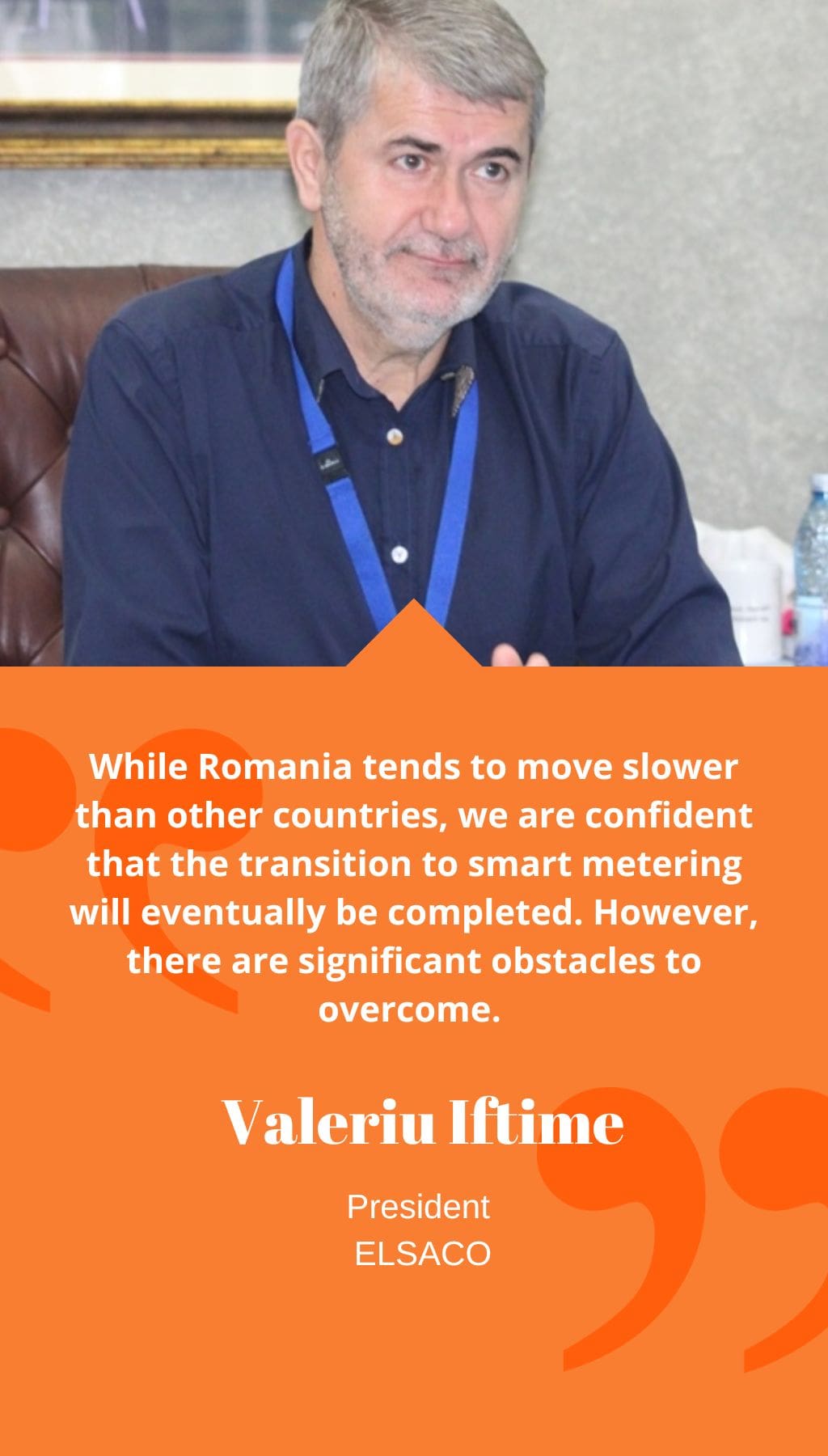
- Romania | 5 March 2019

Could you describe the evolution of Elsaco in the Romanian market since its inception and the key sectors that are driving demand currently?
When Elsaco started, our primary focus was on selling utility meters. Our vision wasn’t to grow into a complex organization. However, as we delved deeper into the energy sector, we gained a comprehensive understanding of energy consumption in Romania. With this knowledge, we began exploring how energy is produced and distributed, which led us to expand our business into building distribution networks and plants of various sizes. We then pondered on how we could make these processes more efficient. Our answer was technology, so we utilized our engineering background and developed software that tracks energy consumption and performs efficiency calculations. This prompted us to think even more deeply about energy efficiency and create a division that specializes in studies, strategies, and theoretical models in this field. We eventually split our functions into nine separate entities that operate under the Elsaco umbrella today. Our company’s abilities are now vast. If you envision a deserted city, we have the expertise and capabilities to fully supply it with water, electrical, and thermal energy.
Currently, we see good opportunities in two areas that drive demand. The first is the modernization of water and sanitation networks, which has European funding available (approximately 3 billion EUR). The second is district heating projects, including requests from industrial players that are looking for ways to optimize their consumption.
Given that energy efficiency is one of Romania’s strategic objectives for development and a significant concern for Elsaco, where does Romania stand from an energy efficiency perspective?
Energy efficiency is a major concern for everyone in Romania. While Romania has made some progress in this area, there is still a lot of ground to cover. Three key aspects need to be considered: production, transportation, and consumer education. In terms of production, we have equipment and capabilities that allow for rather high levels of efficiency. However, transportation remains problematic. There are heat distribution networks in Romania that have not been restored for the past 50 years, and this causes about 30% of all thermal energy that is transported to be lost. The need for efficiency in this area is significant. The same holds when it comes to consumer education. The isolation of residential buildings is already a valuable initiative, and by installing smart systems for temperature adjustment, we can achieve additional savings of approximately 20%. Reducing consumption and educating consumer behavior is perhaps more important than building efficient thermal plants. As a company, we have many ideas on how to tackle this issue, from network modeling to technologies for fine measurement of consumption.
As a member of the European Union, Romania was expected to implement smart metering for 80% of its consumers by 2020, but the objective has recently been pushed to 2028. What are the obstacles in implementing this change?
While Romania tends to move slower than other countries, we are confident that the transition to smart metering will eventually be completed. However, there are significant obstacles to overcome. There are about 12 million consumers in the country, which implies a relatively high financial effort to install smart meters. Additionally, proper infrastructure is needed to allow for data collection and interpretation. The fast pace at which technology evolves also presents challenges. For example, today we have instruments such as IoT solutions that allow remote and real-time reading of meters that did not exist three years ago. We need to consider this change within the wider concept of smart cities. One issue we’ve observed is that no one checks after implementation to ensure that it was done correctly and that the desired results were achieved. The purpose of this measure is to analyze and manage energy flows later to reduce consumption while maintaining the same levels of comfort.
What are Elsaco’s objectives for the next 2-3 years, and how do you envision the local market unfolding?
Our primary objective is to be actively involved in the revitalization of the urban heating systems, as well as the water and sanitation networks in various Romanian cities, while simultaneously providing turnkey solutions for industrial clients. We anticipate that the total worth of projects in these domains at a national level will range between 7-9 billion EUR in the forthcoming years. Additionally, we are focusing on our software division, which includes cyber-security, communication systems, and remote management. Although we are also considering expanding globally, our focus will remain on strategic markets where we can retain our competitive edge. We view Romania as a market with immense potential and believe that both private businesses and the government must fulfill their responsibilities efficiently to assist us in achieving our objectives of a greener future.














